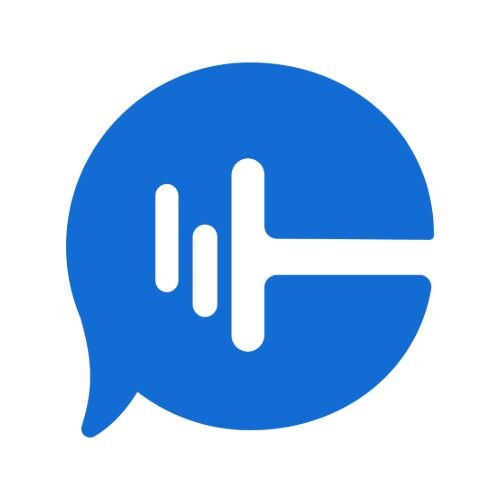Coming up with new ideas for content month after month can be a challenge. You want to provide information that’s useful, engaging, educational or simply entertaining in a variety of ways to as many people as you can. But where do you start?
Call recording is a rich source of information about your customer’s questions, needs, challenges and possibly amusing anecdotes. The benefit of recording sales and customer service calls is the valuable feedback and insight into what customers want. It can even help you develop content specifically for targeted personas based on what you learn from the call.
How Do You Set Up Call Recording
As part of CallRail’s call tracking system, call recording is activated by simply checking a box when you create a new tracking number for a campaign or event. From that point on, all your incoming calls to that number are recorded.
To be sure your business is compliant with your local, state and federal regulations for recording, you can create a “pre-call” voice announcement such as “This call may be monitored for quality and training.” For businesses operating in Canada, call recording falls under the Personal Information Protection and Electronic Documents Act (PIPEDA).
Call recording is often used as a training tool for sales and customer service staff to learn new strategies and share best practices as well as to ensure they understand how to convert leads and solve problems according to company policy. Those same calls can provide many opportunities for content strategies based on real questions, concerns and customer needs.
Content Creation Tips
Listen to your call recordings and look for tidbits that spark content marketing ideas for blog posts, trending topics, or e-book segments. You may find that certain questions come up time and again from a wide variety of customers, or that a specific solution would benefit a certain population of users. Here are a few tips for making the most of what you hear:
- Create a guide or e-handbook for information that’s commonly requested
- Develop a podcast or video of how-to’s showcasing a variety of ways to solve a particular challenge with your product or service
- Design an infographic that lays out the benefits of your product
- Share a case study that details a particular business challenge and how you successfully provided a solution
- Develop a list of Q & A’s that can be linked to or included on your website
- Entertain with a list of what “NOT” to do with your product or service – along with some amusing consequences
- Suggest new or alternative uses for your product or service
- Announce upcoming features that customers have requested
- Explain what you do better than the competition based on feedback you hear
- Compile a list of questions that elicit comments about upcoming trends in your industry
Another way to get ideas for content creation is to have your calls transcribed for easy reading. You can get your call details on paper and submit them in batches to a word cloud generator, such as Word It Out, to get the main topics and phrases found in the calls. You can use these topics to generate content that you know will reside well with prospects and customers because they are apparent in phone conversations.
Share and Promote
There are so many channels on which to share your ideas – using a blog, text, email, video, graphics, podcasts, newsletters, demos, case studies and more. To reach the greatest number of people, you need to generate your content and serve it up in different ways.
- Regular Podcasts: Consider interviewing customers or prospects to share their perspectives on the challenges they face and how your product works for them. Invite listeners to stream it on your site or download for their convenience. Then follow it up was a Q & A session on Twitter.
- Blog Posts: Take your inspiration from client questions, discussions and suggestions. Share a call recording along with the blog (with permission, of course) to enrich the article with a first-person account.
- Email Marketing: Consider adding audio files to your email campaigns where you share service or product information with prospective customers.
- SlideShare Webinars: This type of content can spread virally when you create slide decks along with your audio recordings and share them on social media channels and your website.
- Offer Exclusive Content: Produce and share specific content to unique groups of customers – share some “insider or behind-the-scenes” knowledge that speaks to their unique needs.
- YouTube Videos: Show customers a “hands-on” video about how to use your product or showcase new ideas that are coming soon. This is also a fun way to share comical content about mis-adventures or amusing consequences that relate to your customer questions.
Control your Distribution
Once you have done all the work, generated great content ideas from customer call recordings and implemented them across a variety of media…. how to you extend their longevity? You control the distribution of your content:
Publish “drip-by-drip:” distribute the content only to clients and advocates first…then go public with your social media channels, then follow-up with Q & A’s
Combine “like” items: take solutions, questions or blog posts and roll them all together into an e-book, white paper to email blast with new uses or features
Release Segments: only present a segment of a podcast or e-book to a particular demographic or vertical market, then release the next chapter
Update: make a habit of sharing quarterly or annual updates with new applications, trends or challenges you discover from your recorded customer calls.
The benefits of call recording are vast. There are so many opportunities to mine exactly the kind of content your prospects and customers want to know about and present solutions in ways that engage, amuse and educate. The more your customers interact with your brand and can see that you’re really listening to their concerns and ideas, the more loyal they’ll be. That’s how you gain advocates and stay ahead of the competition.








